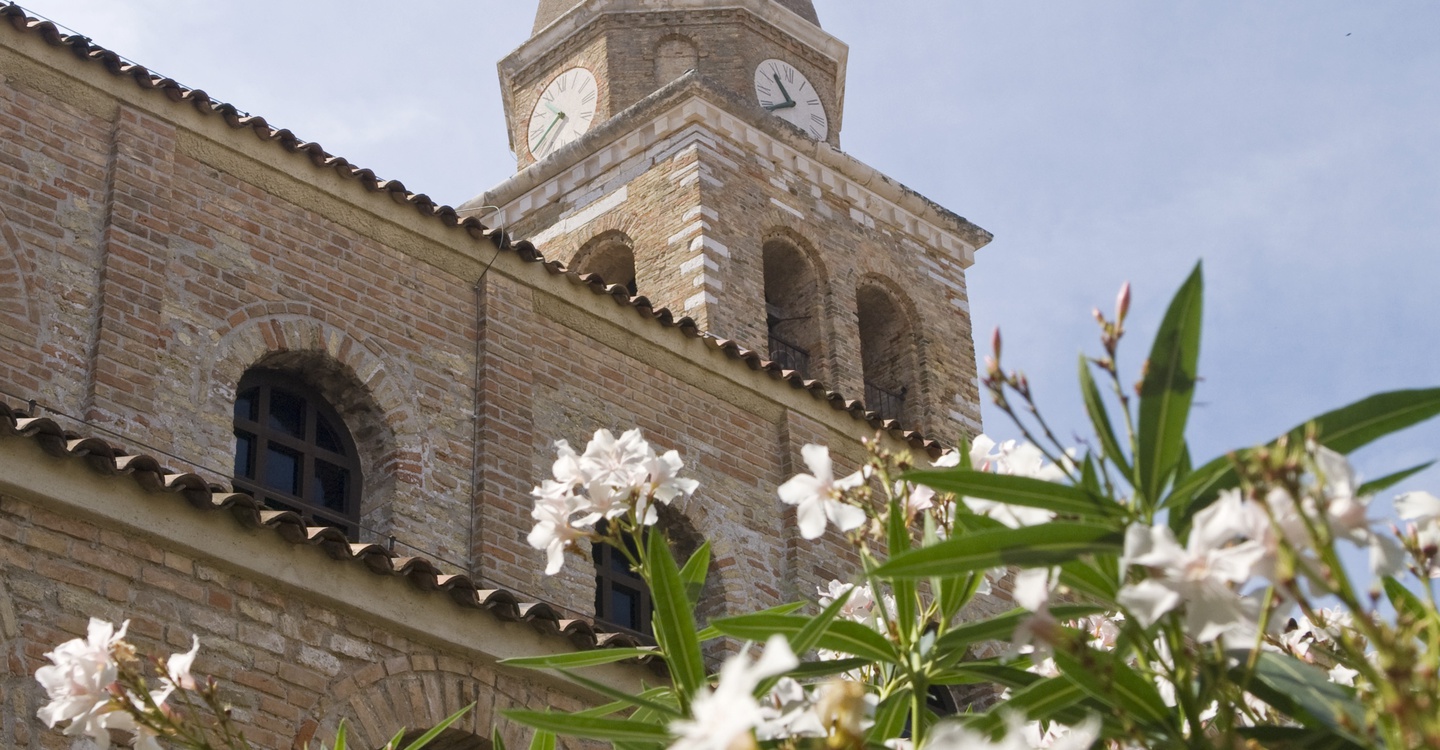The Basilica of Saint Euphemia dates back to the early Christian era. It's the hub of Grado's old town and a sense of contemplation pervades the large building and its precious works of art. Archaeological excavations at various epochs have discovered pre-existing places of worship on the site of the current basilica, including a room, which probably acted as a graveyard and a basilica from the second half of the 5th century: "Petrus basilichetta“, on which Niceta placed the foundations for a new church in the early 5 th century AD; The remains of both of them lie beneath the church consecrated by the Patriarch Elias in 579 and dedicated to Saint Euphemia, a martyr from Chalcedon under Diocletian and patron saint of Rovinj in Istria. The ancient town of Chalcedon is now a district in today's Istanbul. In 451, it hosted the great ecumenical Council held in the local basilica of St. Euphemia.
The Cathedral in Grado was later dedicated to St Ermacora and St Fortunato, the first martyrs of Aquileia and patron saints of Friuli. Bricks and sandstone were used to build the original structure, which is visible from the outside after restoration in the mid 20th century removed almost all the most recent alterations. One existing example of the most obvious restoration work is the column standing in the centre of nearby Campo dei Patriarchi, surmounted by the unusual patriarchal cross. It was originally part of a four-sided portico with several columns, standing in front of the 6th century church. Inside the basilica are two rows of columns that form the three naves, built with materials reclaimed from various locations. Several types of marble were used at different times for both columns and their capitals, some of which are made in Aurisina limestone from the Trieste Karst Plateau. The extraordinarily beautiful mosaic floor dates back to the time of Elias. It was restored in the Post-World War II period with lighter coloured parts. It features inscriptions commemorating the benefactors and geometric, ornamental and symbolic patterns: the most common is the "pelte" decoration, a stylised reproduction of wave marks on the shore.
The unusual Romanesque ambon with the symbols of the four evangelists at the bottom and surmounted by a small, almost Moorish dome stand out among the Mediaeval masterpieces inside St. Euphemia. The multicoloured frescoes of the apse vault and the exquisitely made, silver-gilt altar piece below date back to the fourteenth century. A presbytery enclosure reconstructed with authentic, sculpted parts surrounds the high altar and the 1950 mosaic floor depicting an idealised version of the ancient "Castrum" against the open sea and the lagoon. On each side are two "pastophoria", small rooms to hold the vestments, liturgical objects and, last but not least, the relics. At the back of the right-hand nave you can see the "Salutatorium" a charming space with a mosaic floor, where the Patriarch received the clergy: today it holds a copy of the so-called St. Mark's chair-reliquary, the original of which is in Venice.
A modern corridor leads from this point to the "Lapidarium", a tiny oasis of peace at the back of the Cathedral apse: on display is a precious archaeological and artistic collection, which is not known well enough and definitely deserves a visit. The current chronological exhibition reveals the rich collection of lapidary work, consisting of numerous fragments of marble decorations, inscriptions, sarcophagi and capitals dating from the pagan period to the earliest Christianity, from the Byzantine to Mediaeval periods. Go back through the exhibition of archaeological finds and exit from the side of the Basilica into the open air where the Episcopal and Patriarchal residence once stood.
The 15th century bell tower is topped by the weathervane of the Angel St. Michael, a gift from Venice and lovingly referred to by the people of Grado as the "Anzolo", with wings unfolded, its outstretched right arm and index finger point in the direction of the wind.
The entrance to the Baptistery is on the other side of the Cathedral and although it has been repeatedly altered, it has kept its characteristic, octagonal shape and traces of a beautiful 6th century mosaic floor. Inside, the symbolic, hexagonal baptismal font continues to evoke the traditional baptism by immersion, even though it has been restored several times.
Outside once again amidst Roman sarcophagi found in Hapsburg Grado in 1860, the unusual inscription on the largest sarcophagus, the tomb of a husband and wife who lived for many years "...SINE ULLA QUERELLA..." without every quarrelling, without complaining, will bring a smile to your face!
DID YOU KNOW THAT...?
Since its consecration in 579 AD, the Basilica of Sant’Eufemia has never ceased to celebrate religious services and has carried out its work continually.
